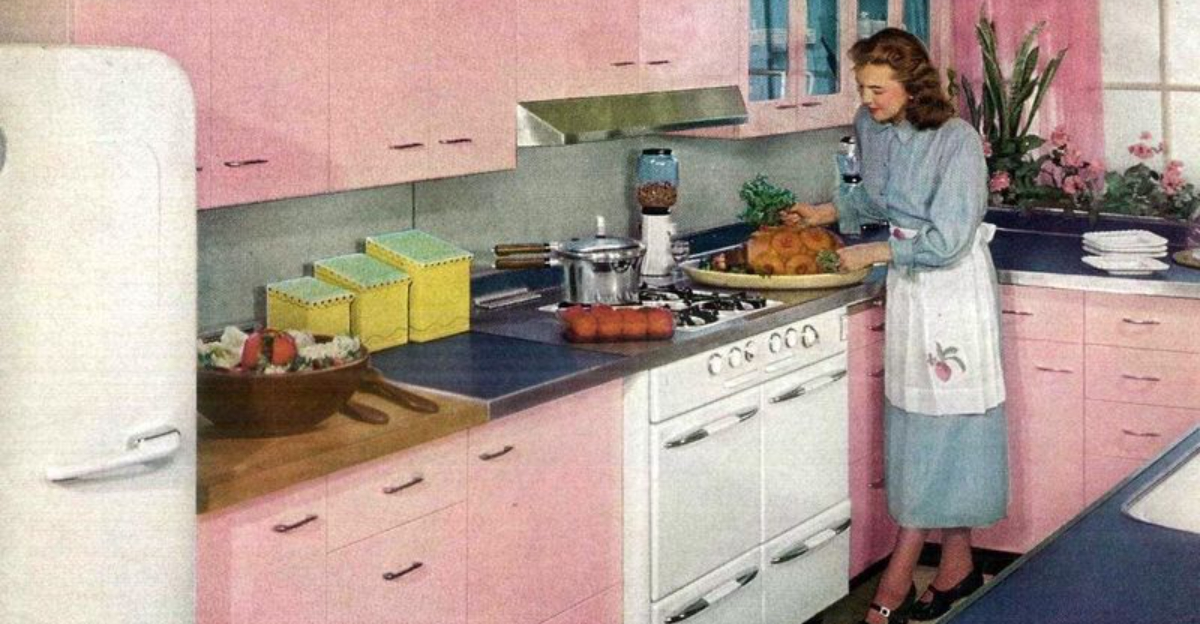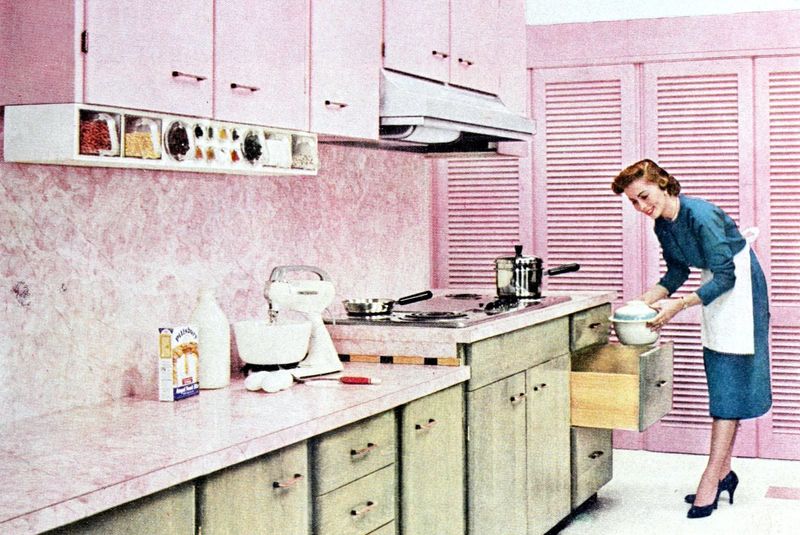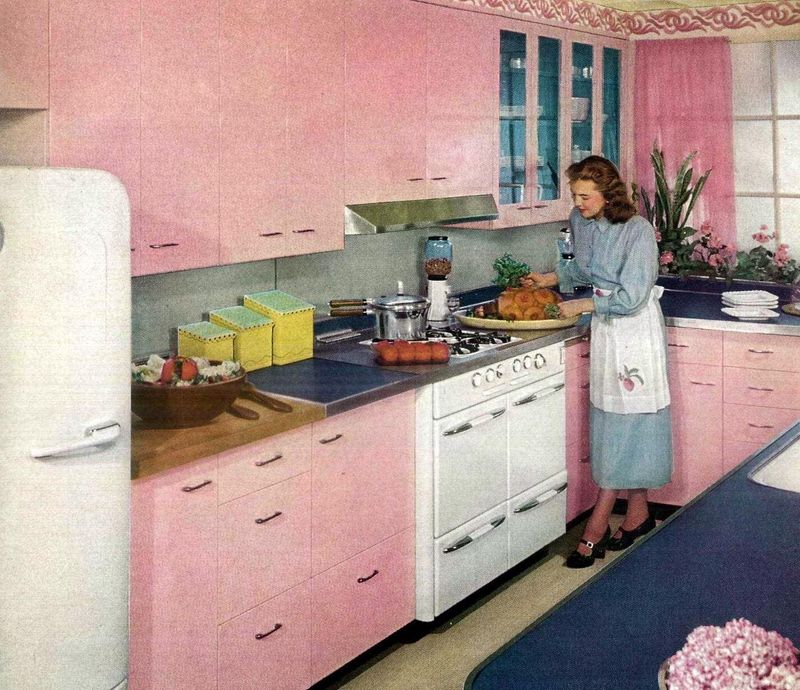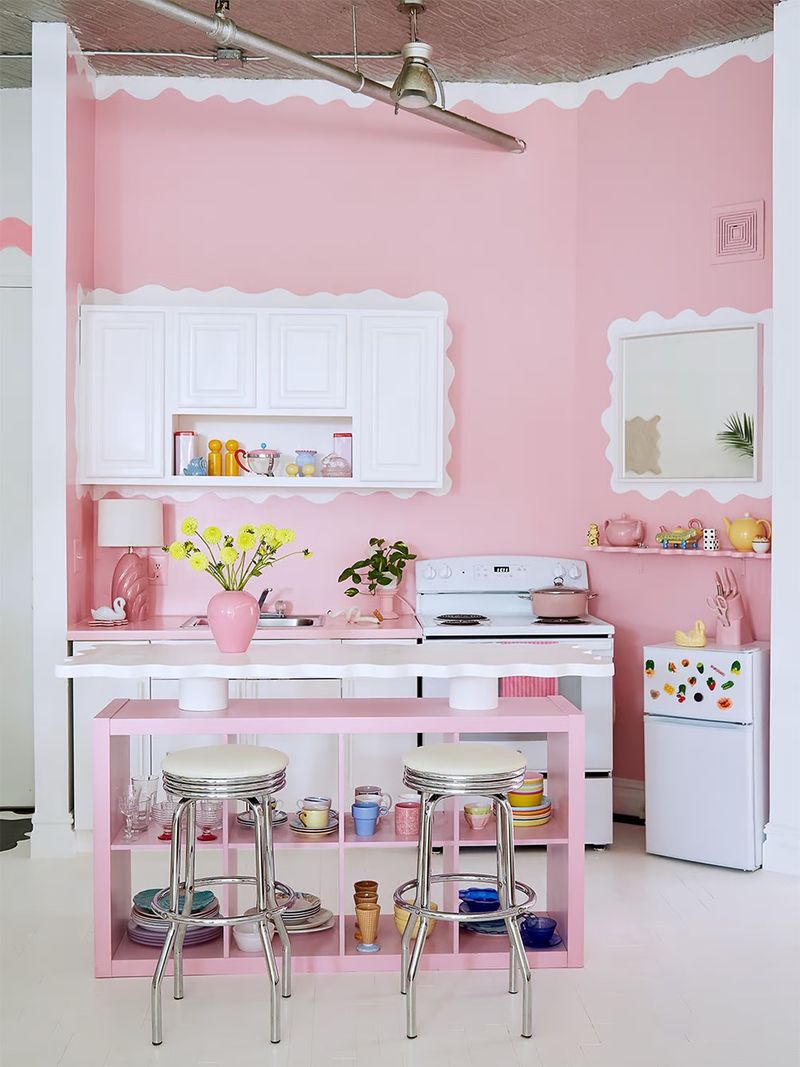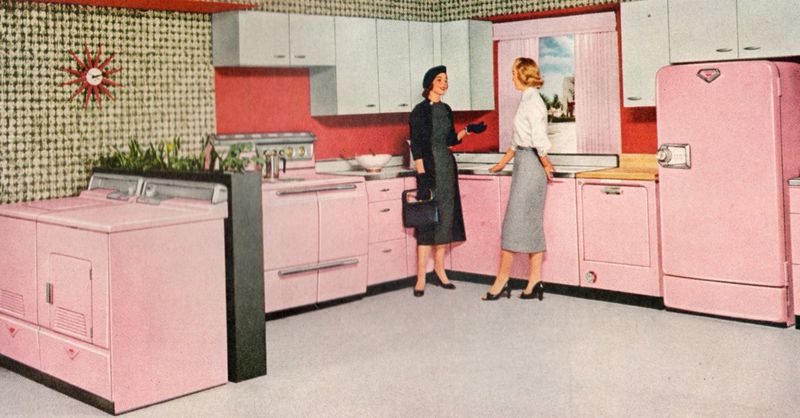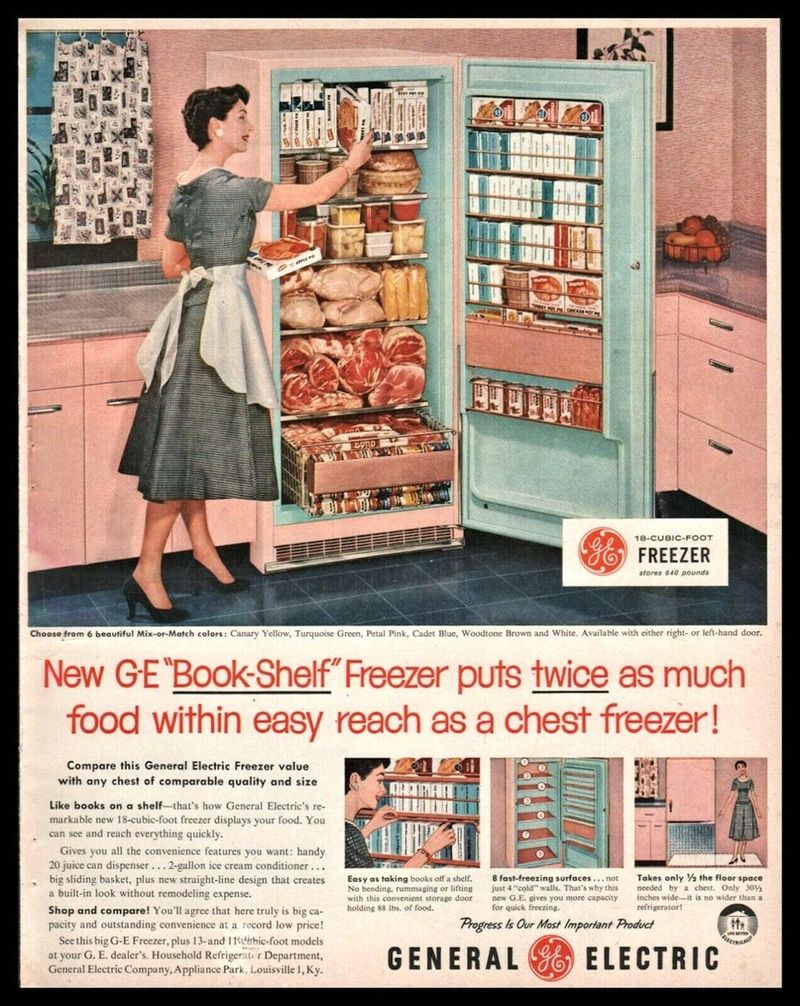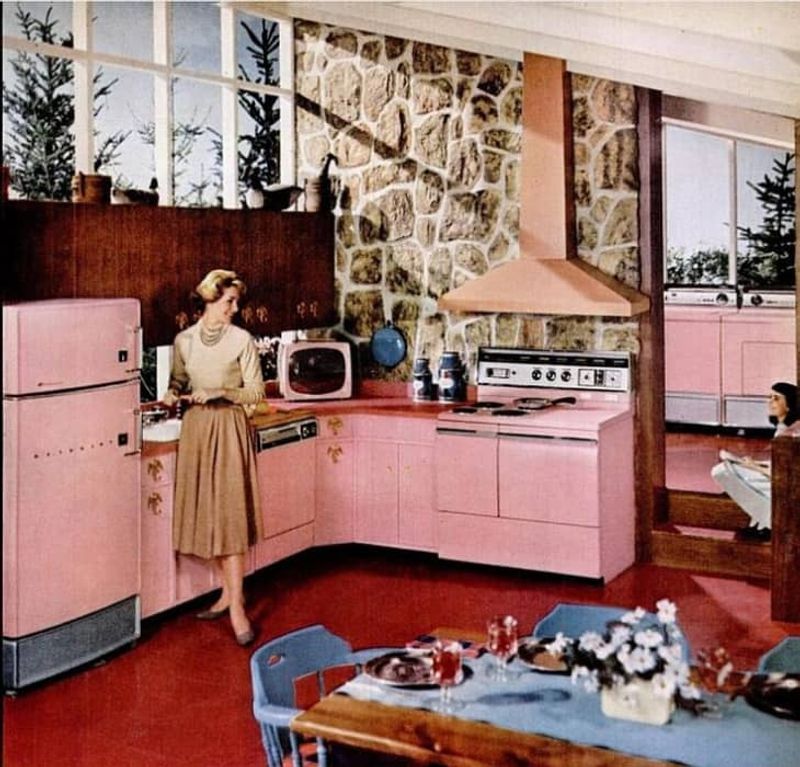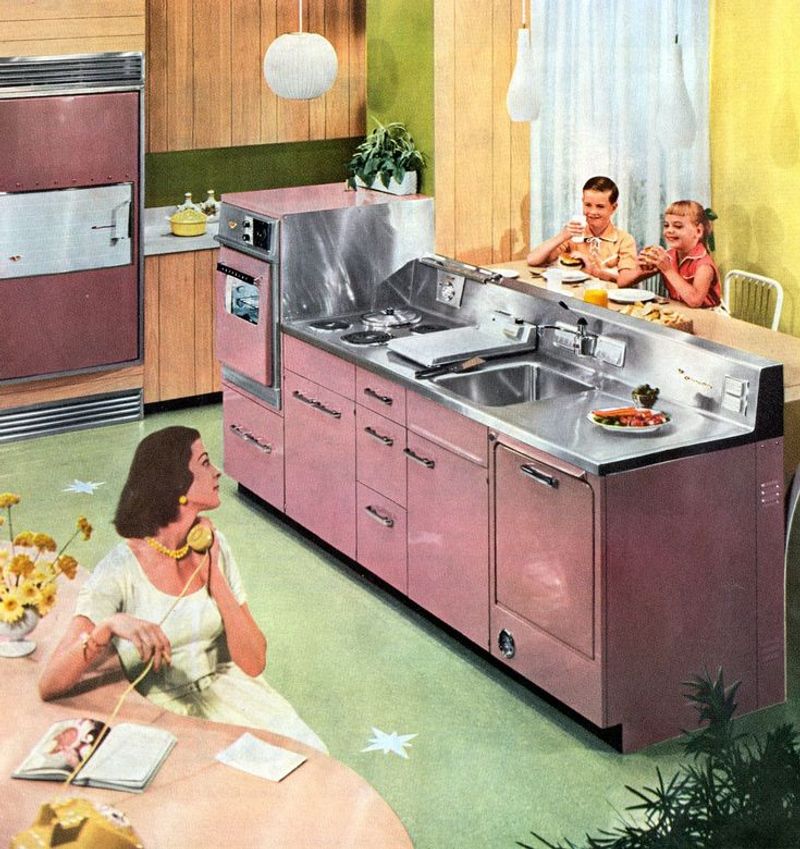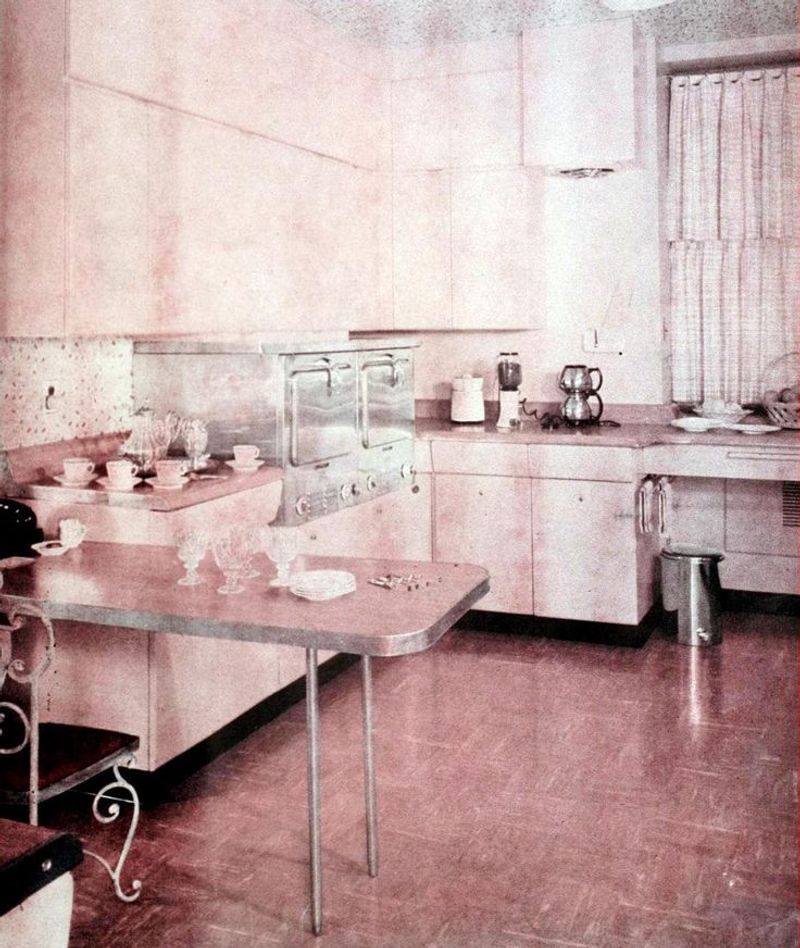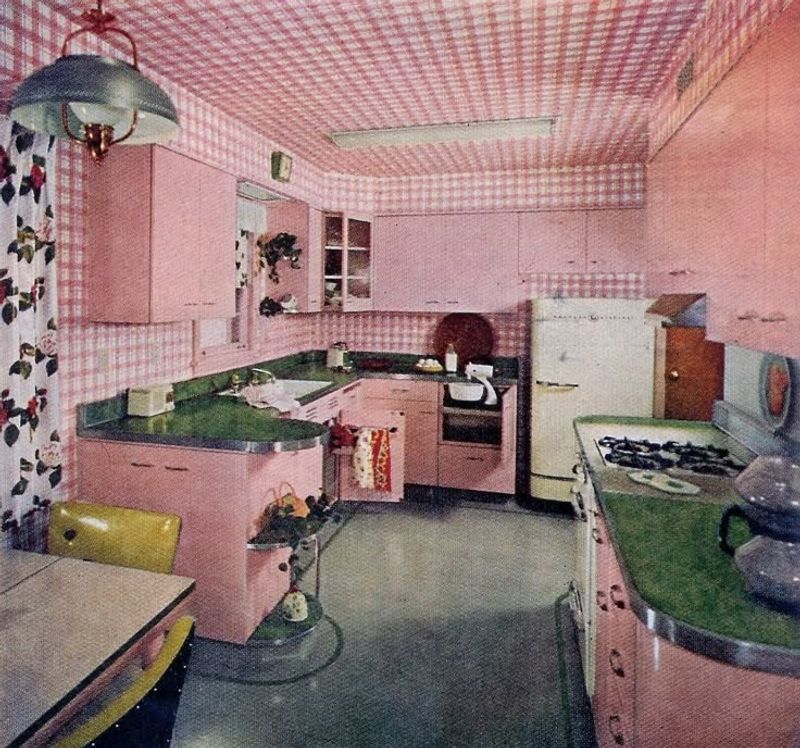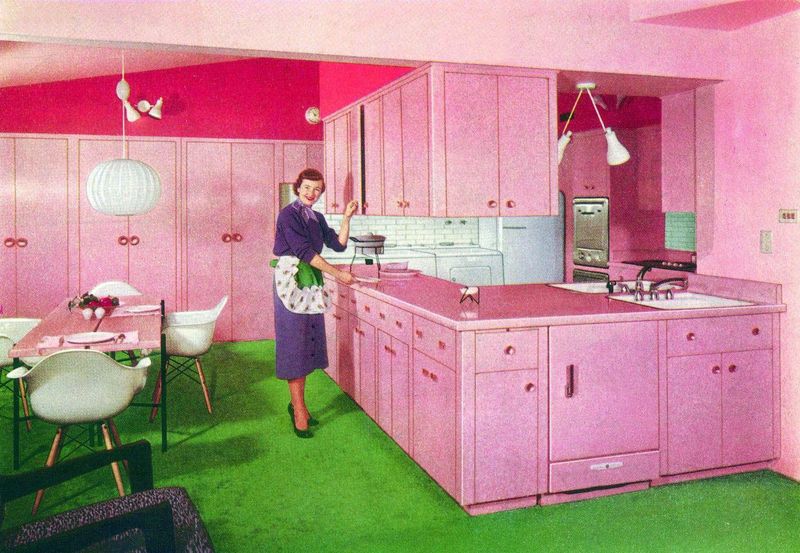In the 1950s, America underwent a cultural transformation, embracing vibrant colors and new aesthetics in home design. Among these changes, pink kitchens emerged as a beloved trend, symbolizing a mix of tradition and modernity.
This blog explores ten compelling reasons why the nation fell in love with pink kitchens during this iconic era.
1. Mamie Eisenhower Made It Iconic
Mamie Eisenhower, the First Lady of the United States in the 1950s, had a fondness for pink that was so profound it became known as “Mamie Pink.” Her love for the hue wasn’t just personal; it sparked a nationwide trend.
Her influence was strong, as she often appeared in clothes of this color, which resonated with many American women who admired her style and grace. The gentle pink of her outfits soon found its way into kitchens across the nation, making it a staple color of the era.
A vintage kitchen adorned with pink appliances and decor became a symbol of elegance and femininity, reminiscent of Mamie’s personal touch.
Her legacy remains influential in the realms of fashion and interior design, showing the power of personal style to ignite a trend. She made pink not just a color but a statement, turning kitchens into warm, inviting spaces full of charm.
2. It Symbolized Postwar Optimism
The 1950s were marked by a sense of renewal and hope following World War II, and pink kitchens embodied this optimistic spirit. This cheerful color brought a breath of fresh air into homes, contrasting the somber tones of the wartime era.
Pink represented the dreams of countless Americans who were eager to embrace a brighter future. In kitchens, it provided a lively and uplifting environment, perfect for family gatherings and homemaking.
The color was not just decorative; it reflected the era’s hopeful outlook, as families looked forward to prosperous and peaceful times.
Its presence in the kitchen symbolized joy, renewal, and the spirit of a new beginning, making it an integral part of postwar home aesthetics.
3. Hollywood Made It Glamorous
Hollywood’s golden era brought glamour into the homes of average Americans, and pink kitchens were no exception. Stars like Marilyn Monroe and Jayne Mansfield were iconic figures whose love for pink added a dash of old-school Hollywood allure and elegance to everyday life.
Their influence extended beyond the silver screen, as fans sought to emulate their idols by incorporating pink into their own lives. Having a pink kitchen was more than just a design choice; it was a way to capture a touch of Hollywood’s magic and luxury.
This association with glitz and glamour made the color irresistible, transforming ordinary kitchens into stylish spaces worthy of a movie set. Thus, pink kitchens became a fashionable statement that resonated with the aspirations of many Americans during the 1950s.
4. It Was the Ultimate “Feminine” Kitchen
In the 1950s, societal norms placed women at the heart of the home, and pink kitchens perfectly aligned with these gender roles.
The color was seen as soft, nurturing, and distinctly feminine, making it an ideal choice for a woman’s domain. It provided a backdrop where homemakers could express their care and creativity.
These pink sanctuaries were more than just functional; they were personal spaces where women infused their homes with love and warmth. Cooking, baking, and managing household tasks became a colorful experience, wrapped in shades of pink that radiated comfort and happiness.
This alignment with femininity made pink kitchens a celebrated trend, reflecting the cultural values of the time while creating a cozy and inviting atmosphere for family life.
5. Appliance Brands Went All In
In the 1950s, appliance brands like General Electric and Frigidaire capitalized on the pink trend by offering a wide array of products in this popular color. From refrigerators to ovens, these companies made it possible for homeowners to have fully coordinated pink kitchens, elevating the aesthetic appeal to a new level.
The availability of matching pink appliances turned kitchens into harmonious and stylish spaces that were the envy of many. This marketing strategy not only drove sales but also cemented pink as a staple color in mid-century kitchen design.
The uniformity and visual appeal of these pink appliances made them a desirable choice for those looking to add a touch of modernity and whimsy to their homes. Brands cleverly used this trend to their advantage, turning pink kitchens into a must-have feature of the 1950s domestic scene.
6. Magazines Sold the Dream
Home décor magazines of the 1950s played a pivotal role in promoting pink kitchens as the epitome of modern domestic life. These publications showcased stunning images of pastel kitchens, complete with happy families and gleaming appliances, capturing the imagination of readers nationwide.
The aspirational imagery and persuasive articles turned pink kitchens into a dream many wanted to emulate. By portraying this color as part of an ideal lifestyle, magazines helped solidify its place in American homes.
Readers were drawn in by the promise of a beautiful, harmonious home, with pink kitchens symbolizing success, happiness, and modernity. The influence of these magazines was profound, as they shaped the desires and aspirations of a generation, making pink kitchens a lasting trend.
7. It Stood Out in Suburbia
In the rapidly growing suburbs of the 1950s, pink kitchens offered a way for homeowners to express individuality and creativity. Amidst rows of similar-looking houses, a pink kitchen stood out as a bold and personal statement.
This unique color choice added a touch of flair and personality to homes, breaking the monotony of cookie-cutter designs. For many, a pink kitchen was more than just a trend; it was an expression of identity and style.
By choosing pink, homeowners could differentiate their spaces and make their houses feel uniquely theirs. This desire to stand out and personalize one’s home contributed significantly to the widespread adoption of pink kitchens in suburban America.
8. It Fit the Atomic Age Aesthetic
The Atomic Age aesthetic of the 1950s, characterized by futuristic designs and vibrant colors, found a perfect match in pink kitchens. Paired with chrome accents and shades of turquoise, pink became a defining element of mid-century modern design.
This color palette evoked a sense of innovation and progress, reflecting society’s fascination with technology and space exploration. Pink kitchens resonated with the era’s forward-thinking spirit, as they represented a blend of style and innovation.
The harmonious combination of colors and materials created kitchens that were not only functional but also visually striking. This unique aesthetic captured the imagination of many, making pink kitchens an iconic feature of the Atomic Age.
9. It Made the Kitchen Feel Happy
The soft pink tones of 1950s kitchens contributed to a warm and cheerful atmosphere, turning the kitchen into the heart of the home. These inviting spaces became places where families gathered to share meals, stories, and laughter.
The color’s ability to create a cozy and joyful environment was unmatched, making it a favorite choice for homeowners. Pink kitchens radiated positivity and warmth, enhancing the overall mood of the household.
This happy ambiance made everyday activities feel special, as the gentle hues wrapped family life in comfort and joy. The emotional connection to the color ensured that pink kitchens remained a cherished element of 1950s home design.
10. It Was a Rebellion Against Bland
After years of enduring the drab and muted colors of wartime, Americans were ready for a change, and pink kitchens provided the perfect antidote. The bold and vibrant hues offered a refreshing break from the past, symbolizing a design rebellion that resonated with the spirit of the times.
Choosing pink was a way to embrace life with enthusiasm and joy, leaving behind the somber tones of previous decades. Kitchens became vibrant canvases where creativity flourished, and pink was at the center of this colorful revolution.
This bold choice reflected a desire for joy and individuality, making pink kitchens a permanent fixture in the landscape of 1950s home design. The embrace of pink was a celebration of creativity, marking a significant shift in design preferences and cultural attitudes.
